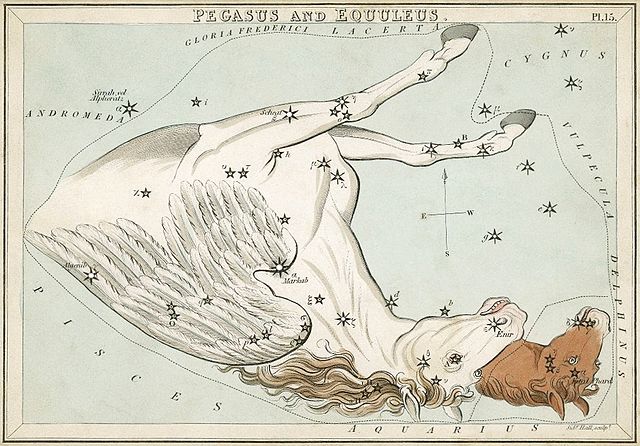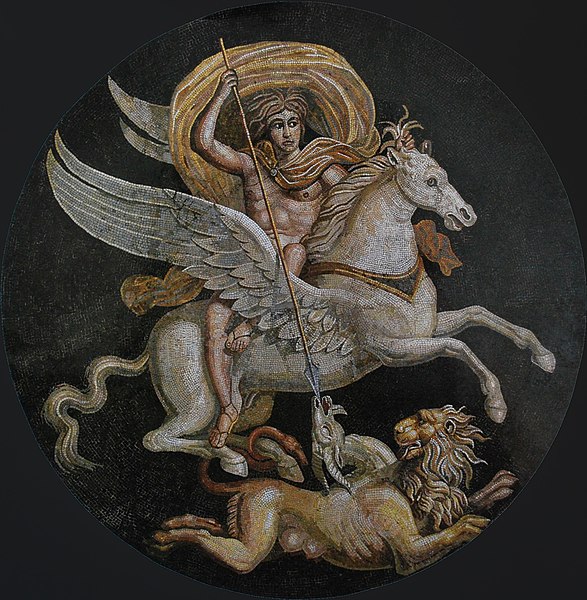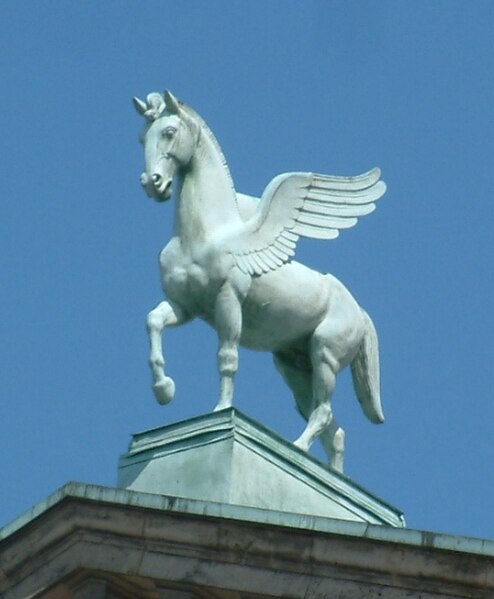Pegasus is a constellation in the northern sky, named after the winged horse Pegasus in Greek mythology. It was one of the 48 constellations listed by the 2nd-century astronomer Ptolemy, and is one of the 88 constellations recognised today.
Pegasus with the foal Equuleus next to it, as depicted in Urania's Mirror, a set of constellation cards published in London c.1825. The horses appear upside-down in relation to the constellations around them.
The constellation Pegasus as it can be seen by the naked eye
Pegasus from Al-Sufi's Book of Fixed Stars, dated 1009-10
Stephan's Quintet photographed by the James Webb Space Telescope
Pegasus is a winged horse in Greek mythology, usually depicted as a white stallion. He was sired by Poseidon, in his role as horse-god, and foaled by the Gorgon Medusa. Pegasus was the brother of Chrysaor, both born when their mother was decapitated by Perseus. Greco-Roman poets wrote about his ascent to heaven after his birth and his obeisance to Zeus, who instructed him to bring lightning and thunder from Olympus.
Bellerophon riding Pegasus and slaying the Chimera, central medallion of a Gallo-Roman mosaic from Autun, Musée Rolin, 2nd to 3rd century AD.
Silver denarius of Domitian with Pegasus on the reverse, dated 79–80 AD
Pegasus, as the horse of Muses, on the roof of Poznań Opera House (Max Littmann, 1910)
Pegasus on ancient cup of Marlik








